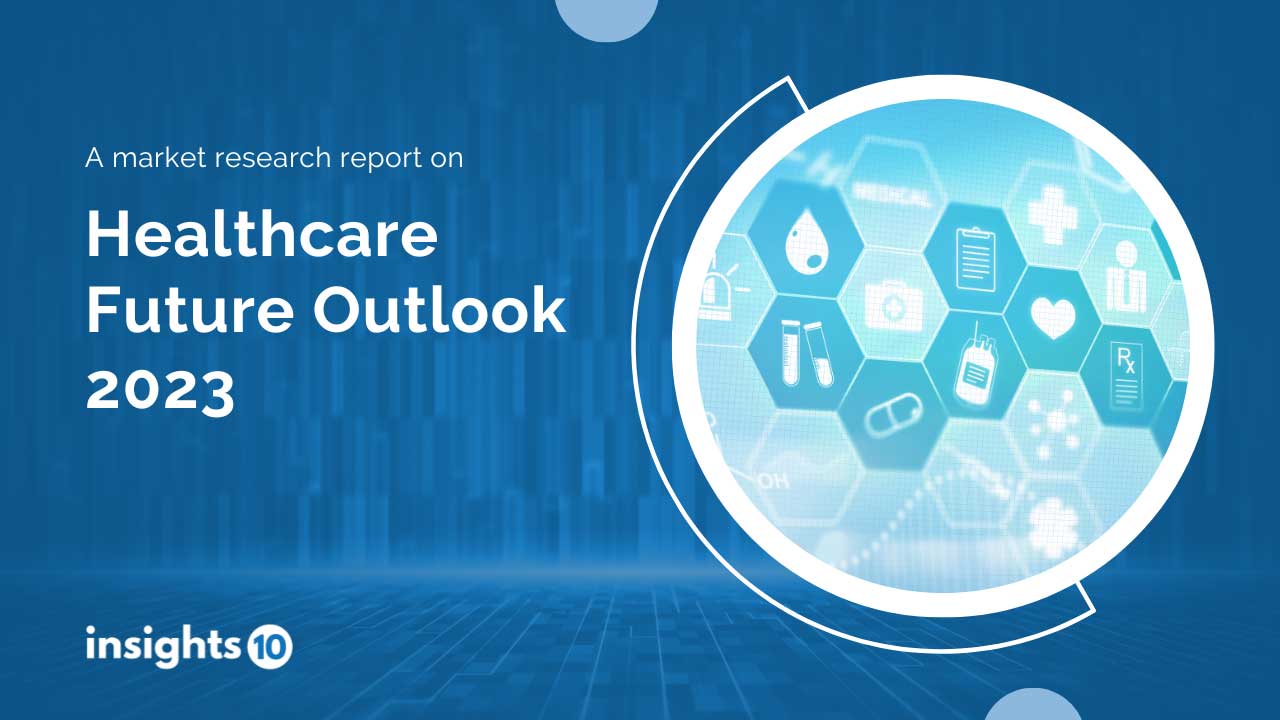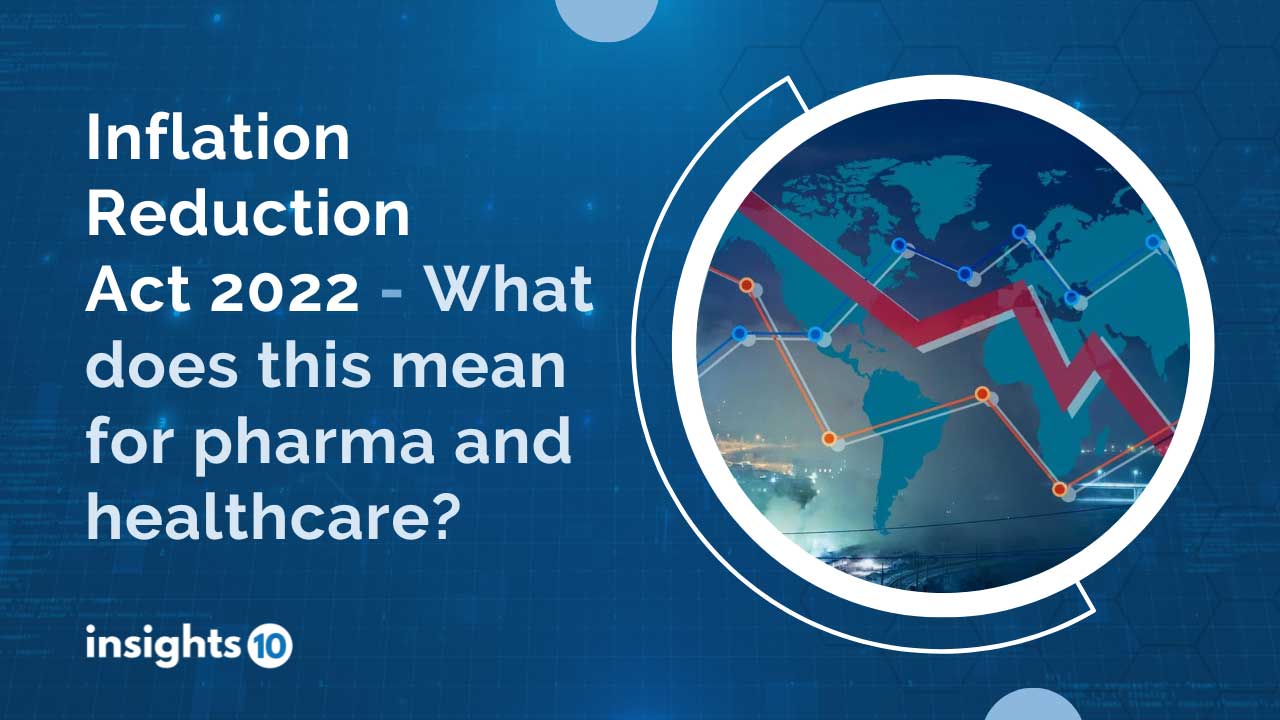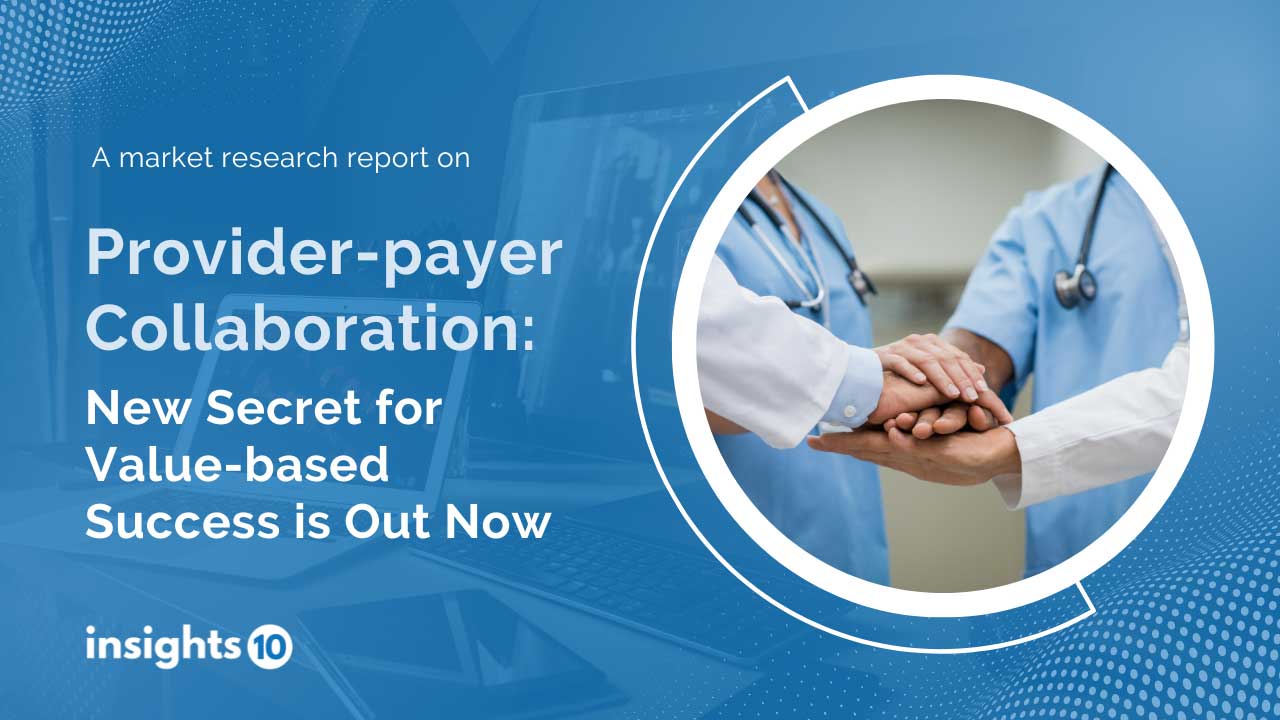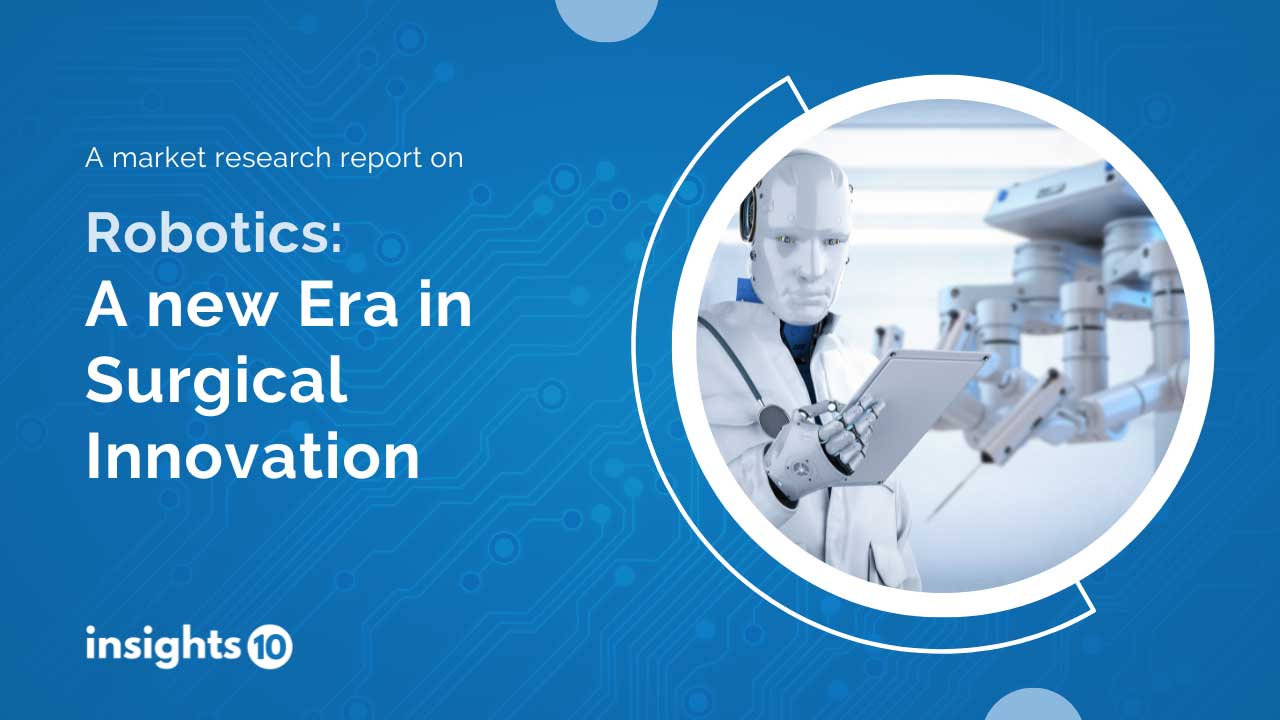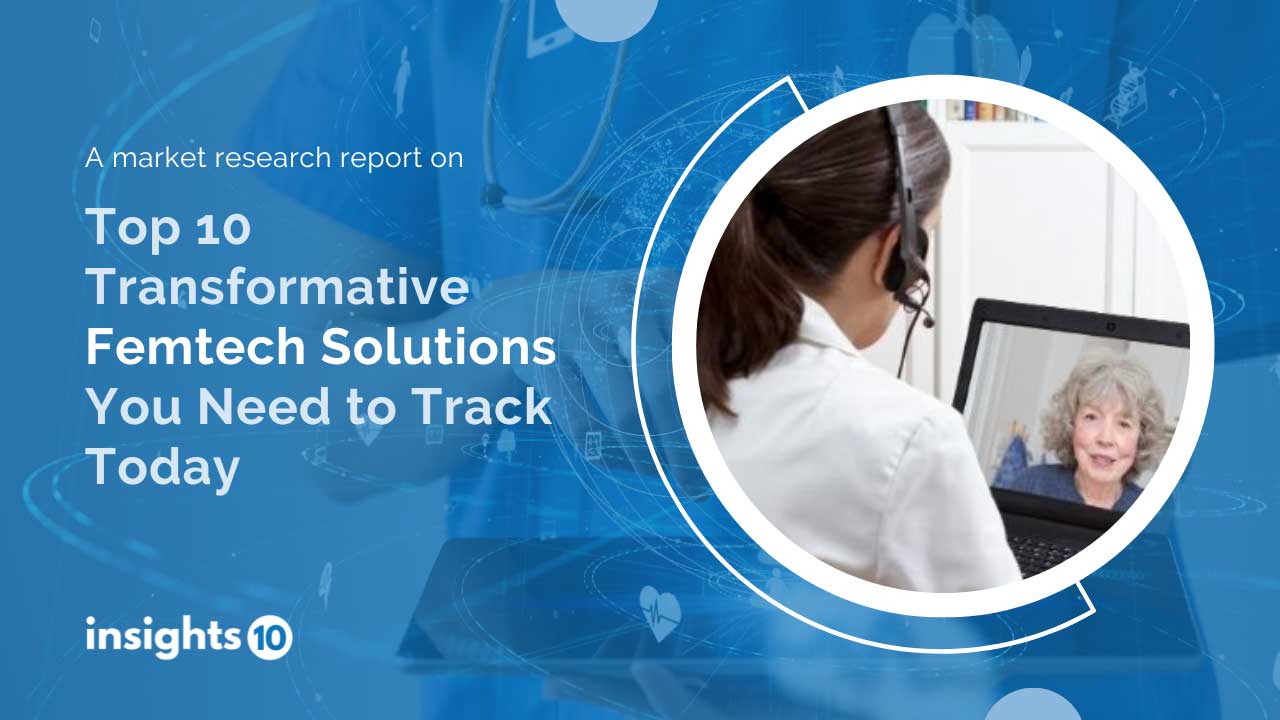Healthcare Future Outlook 2023, Insights10
As the entire world healthcare system is recovering from the impact of COVID – 19, it is constantly evolving for providing better patient care and medical services. Advancement in technologies such as AI, cloud computing, robotics, EHR will seem to take over the trends for the upcoming year as personalized treatments and customized solutions have shown to make their way into the healthcare system.
Buy Now Download Sample Report

Market Overview
- Healthcare trends for 2023 involve maximizing the utility of cloud technology, real-world data, digital wearables, artificial intelligence (AI), consumer healthcare, and remote patient tracking
- Market Drivers: Geriatric population, increased access to healthcare services, advancements in technological innovations, improvement in government policies, increasing prevalence of chronic and metabolic conditions
Future Trends
Personalized healthcare:
- Increasing prevalence of chronic diseases, growing demand for personalized medical treatments & Government initiatives and policy support
- Advances in genomics and other digital technologies
- Increasing healthcare costs
Regulations & legislation:
- CMS (The Centers for Medicare and Medicaid Services) has announced a hospital reimbursement rate hike of 4.3 percent in 2023 for inpatient prospective payment system (IPPS) and long-term care hospital (LTCH) payment system
- 2023, will expect hospitals to comply with the Hospital Price Transparency Final Rule, which requires hospitals to reveal their standard prices and make prices publicly available to customers
Inflation & affordability:
- The annual US national health spending is anticipated to be $370 billion more by 2027 owing to the impact of inflation when compared to pre-inflation expectations
- Affordability of employer-sponsored health care will decrease considerably to 9.12% of an employee's household income for the 2023 year, down from 9.61% in the 2022
Digital spend inefficiency:
- For healthcare organizations: It may lead to resource wastage and financial losses due to lack of investment returns
- For patients it may lead to suboptimal experience and inefficient healthcare service
Major Innovation & Launches 2023
Genomics England in partnership with the NHS
- $127.51 million funded for a world-leading research study aiding diagnosis of rare genetic diseases in newborns which is expected to begin genome sequencing in 2023
- The grant is part of a new three-year strategy to develop, test, and implement innovative technologies across the health-care system and deliver world class genomic healthcare
Eli Lilly
- Intends to file regulatory applications for five products, undertake six phase 3 trials, and provide findings from six additional phase 3 trials
- Planning to file for the mantle cell lymphoma therapy pirtobrutinib and also set for regulatory submission for drugs for CKD and Alzheimer
Healthcare Market Segment

Top healthcare market segments to look forward to and why
Remote Healthcare
- The continued impact of COVID-19 has added to the existing burden in several countries and increased the demand for at-home healthcare services and remote monitoring devices
- Healthcare consumerism is anticipated to grow significantly from 2023 onward
- Coming forward, as the insurance companies have begin to cover for home healthcare services, the market is expected to surge substantially
Emerging Tech Solutions
- Supply chain disruptions in the past has impacted in a way to pave the way for technologies that will play a significant role in improving diagnosis, management, and therapy
- They will also undoubtedly aid in improving patientcare. This will be especially be useful when dealing with mental health, such as for those suffering from Alzheimer's disease
- Moreover, improve surgical outcomes and add precision to existing practices
Preventive Healthcare
- Growing demand of remote care services has led to advancement of patient monitoring devices
- Furthermore, the increasing use of cloud-based tools to enhance preventative healthcare delivery is fueling market expansion
- Adoption of different government initiatives substantial research and development (R&D) efforts, and increased public knowledge about preventative approaches
Pharmaceutical
- Pharmaceutical market is expected to keep growing at a greater pace as more emerging countries take part in providing cheaper production opportunities
- Rising investments by the key pharmaceutical companies into new clinical trials and R&D to replace conventional therapies with more effective modern medicine
- Specialty medication is anticipated to level up, affecting the drug prices as they fall
1. Executive Summary
1.1 Service Overview
1.2 Global Scenario
1.3 Country Overview
1.4 Healthcare Scenario in Country
1.5 Healthcare Services Market in Country
1.6 Recent Developments in the Country
2. Market Size and Forecasting
2.1 Market Size (With Excel and Methodology)
2.2 Market Segmentation (Check all Segments in Segmentation Section)
3. Market Dynamics
3.1 Market Drivers
3.2 Market Restraints
4. Competitive Landscape
4.1 Major Market Share
4.2 Key Company Profile (Check all Companies in the Summary Section)
4.2.1 Company
4.2.1.1 Overview
4.2.1.2 Product Applications and Services
4.2.1.3 Recent Developments
4.2.1.4 Partnerships Ecosystem
4.2.1.5 Financials (Based on Availability)
5. Reimbursement Scenario
5.1 Reimbursement Regulation
5.2 Reimbursement Process for Services
5.3 Reimbursement Process for Treatment
6. Methodology and Scope
Methodology for Database Creation
Our database offers a comprehensive list of healthcare centers, meticulously curated to provide detailed information on a wide range of specialties and services. It includes top-tier hospitals, clinics, and diagnostic facilities across 30 countries and 24 specialties, ensuring users can find the healthcare services they need.
Additionally, we provide a comprehensive list of Key Opinion Leaders (KOLs) based on your requirements. Our curated list captures various crucial aspects of the KOLs, offering more than just general information. Whether you're looking to boost brand awareness, drive engagement, or launch a new product, our extensive list of KOLs ensures you have the right experts by your side. Covering 30 countries and 36 specialties, our database guarantees access to the best KOLs in the healthcare industry, supporting strategic decisions and enhancing your initiatives.
How Do We Get It?
Our database is created and maintained through a combination of secondary and primary research methodologies.
1. Secondary Research
With many years of experience in the healthcare field, we have our own rich proprietary data from various past projects. This historical data serves as the foundation for our database. Our continuous process of gathering data involves:
- Analyzing historical proprietary data collected from multiple projects.
- Regularly updating our existing data sets with new findings and trends.
- Ensuring data consistency and accuracy through rigorous validation processes.
With extensive experience in the field, we have developed a proprietary GenAI-based technology that is uniquely tailored to our organization. This advanced technology enables us to scan a wide array of relevant information sources across the internet. Our data-gathering process includes:
- Searching through academic conferences, published research, citations, and social media platforms
- Collecting and compiling diverse data to build a comprehensive and detailed database
- Continuously updating our database with new information to ensure its relevance and accuracy
2. Primary Research
To complement and validate our secondary data, we engage in primary research through local tie-ups and partnerships. This process involves:
- Collaborating with local healthcare providers, hospitals, and clinics to gather real-time data.
- Conducting surveys, interviews, and field studies to collect fresh data directly from the source.
- Continuously refreshing our database to ensure that the information remains current and reliable.
- Validating secondary data through cross-referencing with primary data to ensure accuracy and relevance.
Combining Secondary and Primary Research
By integrating both secondary and primary research methodologies, we ensure that our database is comprehensive, accurate, and up-to-date. The combined process involves:
- Merging historical data from secondary research with real-time data from primary research.
- Conducting thorough data validation and cleansing to remove inconsistencies and errors.
- Organizing data into a structured format that is easily accessible and usable for various applications.
- Continuously monitoring and updating the database to reflect the latest developments and trends in the healthcare field.
Through this meticulous process, we create a final database tailored to each region and domain within the healthcare industry. This approach ensures that our clients receive reliable and relevant data, empowering them to make informed decisions and drive innovation in their respective fields.
To request a free sample copy of this report, please complete the form below.
We value your inquiry and offer free customization with every report to fulfil your exact research needs.
